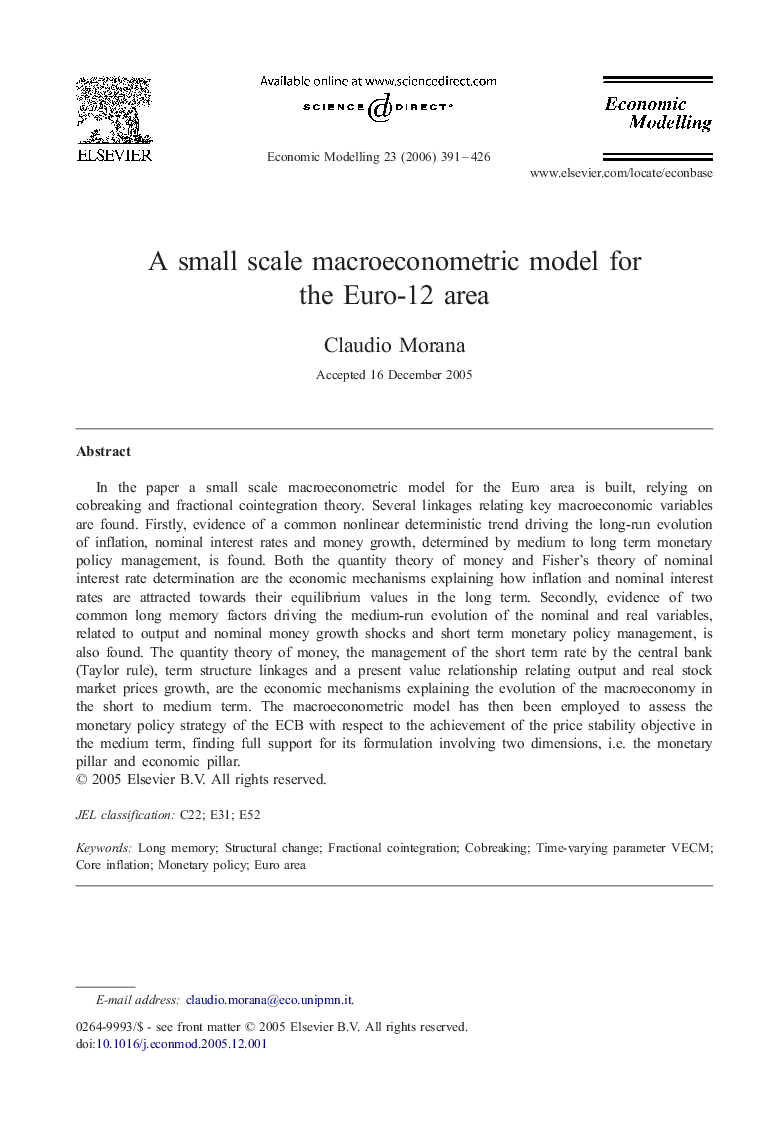| Article ID | Journal | Published Year | Pages | File Type |
|---|---|---|---|---|
| 5056164 | Economic Modelling | 2006 | 36 Pages |
In the paper a small scale macroeconometric model for the Euro area is built, relying on cobreaking and fractional cointegration theory. Several linkages relating key macroeconomic variables are found. Firstly, evidence of a common nonlinear deterministic trend driving the long-run evolution of inflation, nominal interest rates and money growth, determined by medium to long term monetary policy management, is found. Both the quantity theory of money and Fisher's theory of nominal interest rate determination are the economic mechanisms explaining how inflation and nominal interest rates are attracted towards their equilibrium values in the long term. Secondly, evidence of two common long memory factors driving the medium-run evolution of the nominal and real variables, related to output and nominal money growth shocks and short term monetary policy management, is also found. The quantity theory of money, the management of the short term rate by the central bank (Taylor rule), term structure linkages and a present value relationship relating output and real stock market prices growth, are the economic mechanisms explaining the evolution of the macroeconomy in the short to medium term. The macroeconometric model has then been employed to assess the monetary policy strategy of the ECB with respect to the achievement of the price stability objective in the medium term, finding full support for its formulation involving two dimensions, i.e. the monetary pillar and economic pillar.
